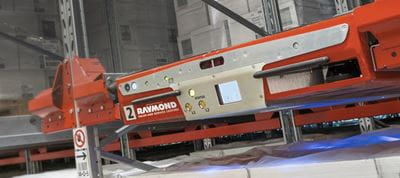Six Common Misconceptions About Automated Storage and Retrieval Systems (ASRS)

While most warehouse businesses are interested in automation, many think it’s too expensive or risky to implement. When done properly, an ASRS project delivers massive gains in productivity and a rapid return on investment. Here are some common misconceptions about ASRS.
Many businesses believe that ASRS are for the “big guys” and they can’t afford the initial investment or the potential downtime associated with these complex systems. Nothing could be further from the truth. ASRS implementations can often generate a positive ROI in 18 months or less and when automated storage systems are properly maintained, downtime is practically nonexistent.
Misconception #1: “ASRS is way too expensive for our operation.”
While it’s true that large scale deployment of ASRS can run in the millions of dollars, smaller implementations can be done for a fraction of that cost. Many factors contribute to a system expense such as unit size, environmental considerations (e.g. clean room, climate controlled), integration requirements and so forth.
On the other hand, a standalone vertical carousel can be well under $100k. Quite often, the savings you generate from reduced labor, floor space and pick errors can easily justify this cost in fewer than 18 months. To put that in perspective, for roughly the cost of a high end automobile you can get something that pays for itself within a year and a half and contributes to your profitability for years to come. How’s that for an investment?
As an example, let’s suppose a manufacturing plant adds a vertical lift module to store parts required on the production line. The VLM immediately frees up 85% of the floor space that was once occupied by racks and shelving to hold the parts by storing them in a densely packed column that almost reaches the ceiling of the building.
That recovered floor space can be repurposed for additional manufacturing capacity that can rapidly justify the cost of the initial investment. Once the VLM equipment has been paid for, the additional capacity the business has gained will pay dividends for years to come.
Misconception #2 | “Complex equipment means lots of down time”
While it’s true that replacing racks and shelves with machinery is more “complex”, ASRS systems are well built mechanism with decades of proven use in harsh manufacturing environments. The fact is, if these systems are maintained properly there is rarely a situation where you’ll experience an unplanned outage.
Schedules preventive maintenance is often included during the initial warranty period. After the warranty expires a preventative maintenance program can be purchased that will keep your equipment in top shape. When ASRS systems are maintained regularly they can perform flawlessly for 15 or more years.
Although preventative maintenance comes with a price tag, it’s far less than what an extended unplanned outage and emergency repair will cost you. Routine maintenance costs are minimal compared to the cost savings and productivity increases you’ll get from a typical ASRS project.
Misconception #3 | “Our software doesn’t integrate with ASRS.”
If your needs are fairly basic, most automated systems can provide fundamental inventory management functions from the onboard controls. For advanced inventory management features such as inventory tracking, FIFO/LIFO picking or batch picking, you’ll need inventory management software. ASRS are often packaged with modular inventory management software that can address your specific needs. These can be directly integrated with your existing WMS or ERP system.
Misconception #4 | “Training our people is going to be an expensive hassle.”
In most cases, training is included when you purchase an automated system. The fact is, ASRS equipment is designed from the ground up, with the operator in mind, meaning that the interfaces are intuitive and user-friendly. For high-turnover or seasonal operations, most manufacturers offer a “train the trainer” package so that you can have your own in-house subject matter experts for your ASRS equipment.
Misconception #5 | “We’re a small business. We can’t use that type of warehouse automation.”
You don’t have to be Amazon to benefit from warehouse automation technology. ASRS solutions are highly scalable and can offer enormous cost saving opportunities for small and medium businesses.
Although your needs might be much smaller than the Amazons of the world, the ROI models still work, only at a smaller scale. Maximizing warehouse space and reducing labor costs are good for any kind of business.
Misconception #6 | “We don’t have enough volume to justify ASRS.”
High volume is not necessarily a requirement for building an ROI model for an ASRS solution. For instance, you may store specialty items that aren’t used often and take up space in your warehouse. You can store those in a system that uses only 15% of the footprint of your existing racking or shelving, freeing up space to put to other revenue generating uses. It also give you a paper trail of exactly who picked which items and when, which can help minimize expenses and losses. Furthermore, you’ll have inventory numbers at your fingertips, which can be particularly helpful with items that don’t get used often.
Would You Like More Information? Talk to an automation expert at Raymond West. Give us a call at 562-944-8067.

